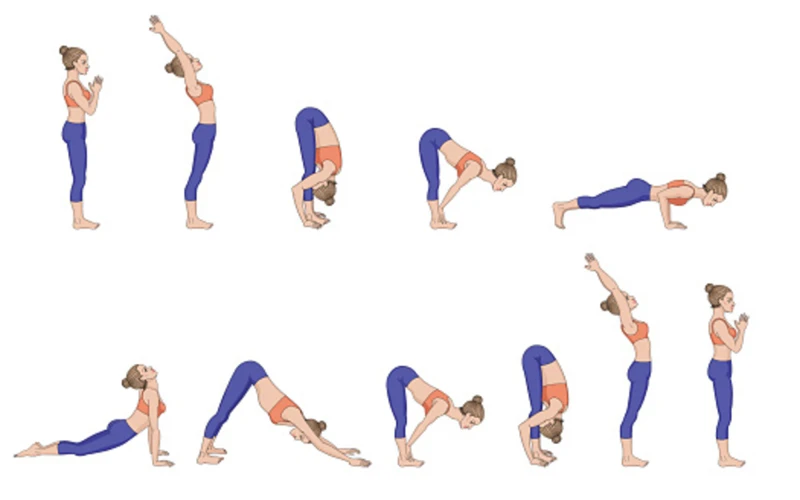Have you been feeling overwhelmed and stressed recently? Or struggling with depression and mood disorders? If you’re looking for a holistic approach to improve your mental health, Kundalini Yoga might be the answer. This ancient practice involves physical postures, breathing techniques, and meditation to awaken your spiritual energy and promote physical and emotional wellbeing. In this article, we’ll explore the fundamentals of Kundalini Yoga, its benefits for mental health, and how you can get started with your own practice. Let’s dive in and discover the transformative power of Kundalini Yoga.
What is Kundalini Yoga?

As you explore the vast world of yoga, you may stumble across the term “Kundalini yoga” and wonder what it means. Kundalini yoga is a unique form of yoga that focuses on awakening the energy at the base of the spine and using it to reach a higher level of consciousness. It combines physical movements, breathing techniques, meditation, and chanting to create a powerful and transformative experience. In this section, we will delve deeper into the basics of Kundalini yoga and discover what makes it a unique and beneficial practice for your mind, body, and spirit.
Understanding the Basics of Kundalini Yoga
Kundalini yoga is a spiritual practice that originated in ancient India and has been practiced by people around the world. This form of yoga is known for awakening the dormant energy that lies at the base of the spine, which is called the Kundalini energy. This energy can be awakened through yoga poses, chanting, and meditation.
The basics of Kundalini yoga include:
- Focus on breath: In Kundalini yoga, breath is considered to be a powerful tool for enhancing energy and focus. Students are taught to pay careful attention to their breath and use it to improve their physical and mental well-being.
- Chanting: Another key component of Kundalini yoga is chanting. This practice involves repeating mantras or words that are believed to have a powerful effect on the mind and body. Chanting helps to focus the mind and promote relaxation.
- Meditation: Kundalini yoga also involves meditation, which can help to reduce stress, increase relaxation, and enhance overall well-being.
- Yoga poses: In addition to breathwork, chanting, and meditation, Kundalini yoga incorporates a variety of yoga poses. These poses may be held for longer periods than other forms of yoga, and they are intended to awaken the Kundalini energy.
Kundalini yoga is a practice that emphasizes the connection between the body, mind, and spirit. It encourages practitioners to focus on their breath, use chanting to promote relaxation, and use yoga poses to awaken the dormant energy that lies at the base of the spine. Through regular practice, many people report feeling more centered, balanced, and calm.
Benefits of Kundalini Yoga
Kundalini Yoga has numerous benefits for both the mind and the body. Let’s take a look at some of the most prominent ones in the table below:
| Benefit | Description |
|---|---|
| Reduces Stress and Anxiety | Kundalini Yoga incorporates breathing exercises and meditation that can calm the mind and reduce the negative effects of stress and anxiety. |
| Strengthens the Nervous System | Kundalini Yoga works to strengthen the nervous system, which can lead to improved cognitive function and overall wellbeing. |
| Improves Flexibility and Balance | The yoga postures (asanas) in Kundalini Yoga help increase flexibility and balance in the body, promoting physical health. |
| Stimulates the Immune System | Research has shown that Kundalini Yoga can boost the immune system, leading to better health and resistance to illness. |
| Enhances Spiritual Awareness | Kundalini Yoga is a spiritual practice that aims to help practitioners connect with their higher selves, leading to enhanced spiritual awareness and growth. |
| Reduces Chronic Pain | Practicing Kundalini Yoga can help reduce chronic pain and improve quality of life for those experiencing chronic pain conditions. |
The benefits of Kundalini Yoga are vast and can greatly improve both physical and mental health. In the following sections, we will explore how Kundalini Yoga specifically addresses mental health concerns such as stress, anxiety, depression, and mood disorders.
How Kundalini Yoga Can Help with Mental Health

If you are someone who suffers from stress, anxiety or any form of mood disorder, Kundalini Yoga might be the answer you have been looking for. This ancient practice, which originated in India, has been gaining popularity around the world because of its numerous benefits for both the mind and the body. By using specific breathwork, postures, and meditation techniques, Kundalini Yoga has the potential to help alleviate the symptoms of various mental health conditions. In this section, we will dive into how Kundalini Yoga can benefit mental health and improve overall wellbeing.
Regulating Stress and Anxiety
When it comes to managing stress and anxiety, Kundalini yoga offers numerous benefits. With its emphasis on breathing techniques, meditation, and physical postures, Kundalini yoga can help calm the mind and body, reducing feelings of stress and anxiety.
One study found that practicing Kundalini yoga for 12 weeks resulted in significant reductions in perceived stress and anxiety levels among participants. This may be because Kundalini yoga activates the parasympathetic nervous system, which in turn promotes feelings of relaxation and calmness. The rhythmic breathing and chanting involved in Kundalini yoga can help regulate the breath and quiet the mind, allowing individuals to better cope with feelings of stress and anxiety.
Additionally, Kundalini yoga can help individuals tap into their inner strength and resilience, which can be especially helpful during times of stress and anxiety. By practicing Kundalini yoga, individuals may be better equipped to handle difficult situations and navigate through challenging emotions.
Incorporating Kundalini yoga into a regular wellness routine may be a helpful way to regulate stress and anxiety levels, promote relaxation and calmness, and increase overall well-being.
| Benefit | Description |
| Reduces stress and anxiety | Activates the parasympathetic nervous system, regulates breathing, and creates feelings of relaxation and calmness |
| Promotes inner strength and resilience | Helps individuals tap into their inner strength, which can be helpful during times of stress and anxiety |
| Improves coping skills | Enables individuals to better cope with difficult situations and navigate through challenging emotions |
Relieving Depression and Mood Disorders
One of the major benefits of Kundalini Yoga is its potential to relieve symptoms of depression and mood disorders. Studies have shown that practicing Kundalini Yoga can lead to significant improvements in mood, including reductions in symptoms of anxiety and depression.
The practice of Kundalini Yoga may help balance the nervous system, which can be especially beneficial for those struggling with depression. This can also lead to increased feelings of relaxation and wellbeing, which can help alleviate symptoms of anxiety and stress.
The focus on breath work and meditation in Kundalini Yoga can also be helpful for those with mood disorders. Regular practice of breathing techniques, such as the Breath of Fire, can help regulate the body’s natural rhythms, leading to a sense of calm and mental clarity.
Kundalini Yoga can also stimulate the release of endorphins, hormones commonly associated with feelings of happiness and pleasure. This can help improve one’s overall mood, leading to a greater sense of wellbeing and satisfaction.
While Kundalini Yoga should not be seen as a replacement for professional treatment, it can be a helpful addition to a mental health care plan. Regular practice may help alleviate symptoms of depression and mood disorders, leading to a greater sense of mental and emotional stability.
Boosting Wellbeing and Spiritual Potential
One of the most intriguing benefits of Kundalini Yoga is its ability to boost overall wellbeing and spiritual potential. This ancient practice has been known to help individuals connect with a deeper sense of purpose and fulfillment in life. Here are some ways Kundalini Yoga can help boost your overall wellbeing and spiritual potential:
1. Increased Energy: Kundalini Yoga is known to stimulate the release of energy stored in the body, leading to a sense of rejuvenation and vitality. This increase in energy can help individuals feel more engaged and motivated to pursue their goals.
2. Greater Self-Awareness: Practicing Kundalini Yoga can lead to a greater sense of self-awareness, which can help individuals understand their strengths and weaknesses. This self-awareness can lead to better decision-making and a greater sense of control over one’s life.
3. Enhanced Creativity: Kundalini Yoga can help individuals tap into their creativity by opening up the flow of energy and ideas. This can be especially useful for artists and writers who may struggle with creative blocks.
4. Improved Intuition: Through the practice of Kundalini Yoga, individuals can tune into their intuition and develop a greater sense of inner guidance. This can be especially helpful when making important life decisions.
5. Increased Compassion: Kundalini Yoga can help individuals develop a greater sense of compassion and empathy towards others. This can lead to more meaningful relationships and a greater sense of interconnectedness with the world.
The benefits of Kundalini Yoga go far beyond just physical health. This ancient practice has the potential to transform individuals on a deep level, leading to a greater sense of purpose, fulfillment, and spiritual growth.
How to Start Practicing Kundalini Yoga

If you’re intrigued by the potential mental health benefits of Kundalini Yoga and are interested in practicing it yourself, you may be wondering where to begin. Starting a new form of yoga can be intimidating, but with the right preparation and techniques, anyone can begin to incorporate Kundalini Yoga into their daily routine. In this section, we’ll explore the steps and techniques to start your own Kundalini Yoga practice, from preparing yourself for your first session to maintaining a regular practice over time.
Preparing for Your Practice
Before beginning your Kundalini Yoga practice, it’s important to prepare your mind and body for the experience. This can help you get the most out of your practice and ensure that you are practicing safely. Here are some things to keep in mind when preparing for your Kundalini Yoga sessions:
| Preparation Steps | Details |
|---|---|
| Wear Comfortable Clothing | Choose loose-fitting, breathable clothing that allows for a full range of movement. Avoid wearing tight, restrictive clothing that may hinder your practice. |
| Choose a Quiet and Sacred Space | Find a space where you feel comfortable and undisturbed. You can create a sacred atmosphere with candles, incense, or other items that help you feel calm and focused. |
| Practice on an Empty Stomach | Avoid eating a heavy meal before practicing Kundalini Yoga. It’s best to practice on an empty stomach or at least two hours after eating. |
| Stay Hydrated | Drink plenty of water before and after your practice to help your body stay hydrated. |
| Set an Intention | Take a few moments to set an intention for your practice. This can help you stay focused and connected to your practice. |
| Be Patient and Kind to Yourself | Remember that Kundalini Yoga is a practice, not a competition. Be patient and kind to yourself as you explore this powerful form of meditation. |
By following these preparation steps, you can create the ideal environment for your Kundalini Yoga practice. So, take a few minutes to prepare your mind and body, and get ready to experience the amazing benefits of Kundalini Yoga.
Basic Kundalini Yoga Techniques
To start practicing Kundalini Yoga, it’s important to familiarize yourself with some basic techniques. These techniques are designed to activate and balance your chakras, or energy centers, which can help improve your mental and emotional wellbeing. Here are some of the most essential Kundalini Yoga techniques:
| Technique | Description |
|---|---|
| Breath of Fire | A rapid, rhythmic breath that involves pumping the navel in and out. This technique is believed to help stimulate the nervous system and promote detoxification. |
| Stretch Pose | A simple exercise that involves lying on your back with your legs straight up in the air and your arms at your sides. Hold the pose for several minutes to help strengthen your core and improve circulation. |
| Meditation | A key component of Kundalini Yoga that involves focusing your mind on a specific object or mantra. This can help quiet your thoughts and promote relaxation and inner peace. |
| Mantra | A repetitive phrase or sound that is used in meditation or chanting. Mantras can help connect you to your inner self and promote a sense of calm and wellbeing. |
| Mudra | A hand gesture that is believed to help redirect your body’s energy flow. Different mudras can be used for different purposes, such as promoting relaxation or boosting mental clarity. |
By incorporating these techniques into your daily routine, you can start to experience the many benefits of Kundalini Yoga for your mental and emotional health. Remember to start slowly and focus on proper form and technique, and always listen to your body’s needs and limitations. With practice and dedication, you can begin to unlock your full spiritual potential and achieve greater peace and happiness in your life.
Maintaining a Regular Practice
Maintaining a regular practice is essential for reaping the benefits of Kundalini Yoga. It’s important to dedicate time and effort to the practice to see significant improvements in mental health. To maintain a regular practice, follow the steps outlined below:
| Step | Description |
|---|---|
| 1. | Set aside time for practice each day. Start small, with 10-15 minutes a day, and gradually increase as you become more comfortable with the practice. |
| 2. | Create a peaceful environment. Find a quiet space where you can practice without being interrupted. Decorate the space with soothing colors and objects to promote relaxation. |
| 3. | Be consistent. Schedule your practice for the same time every day to establish a routine. This will help you to build a habit. |
| 4. | Stay motivated. Remind yourself of the benefits of Kundalini Yoga and how it’s helping to improve your mental health. Join a Kundalini Yoga community to stay connected and inspired. |
| 5. | Set goals. Write down specific goals you want to achieve with the practice. This will give you something to strive for and keep you on track. |
By following these steps, you can establish a regular Kundalini Yoga practice that can significantly improve your mental health. Remember to be patient with yourself and recognize that progress takes time. With dedication and commitment, you’ll be able to reap the benefits of Kundalini Yoga and enhance your overall well-being.
Kundalini Yoga and Other Forms of Meditation
When it comes to meditation, there are many different techniques and styles to explore. Kundalini Yoga is just one form of meditation that can help you improve your mental health. However, it is important to note that Kundalini Yoga is not the only form of meditation that can have a positive impact on your mental wellbeing.
Transcendental Meditation is a popular form of meditation that involves repeating a mantra to help quiet the mind and reduce stress. It has been shown to have a positive impact on anxiety, depression, and overall wellbeing.
Vipassana Meditation is another popular form of meditation that focuses on mindfulness and self-awareness. It involves observing the breath and body sensations to cultivate a deeper understanding of the mind-body connection. Vipassana can be useful for reducing stress, anxiety, and improving mood.
Loving-Kindness Meditation is a type of meditation that involves sending love and kindness to yourself, loved ones, and even strangers. This type of meditation can help improve feelings of compassion, empathy, and can be helpful for reducing negative emotions such as anger and resentment.
Guided Imagery is a form of meditation that involves visualizing a peaceful and calming scene to reduce stress and anxiety. It can also be useful for improving sleep and reducing symptoms of depression.
While there are many different types of meditation to choose from, the important thing is to find a style that works for you and your individual needs. It’s also worth noting that combining different forms of meditation, such as Kundalini Yoga and Transcendental Meditation, can be a great way to improve your overall mental health and wellbeing.
Ultimately, the goal of all types of meditation is to achieve a sense of inner calm and peace. By taking the time to explore different techniques and find what works best for you, you can begin to experience the benefits of meditation in your daily life.
Conclusion
In conclusion, Kundalini Yoga is a powerful practice that can have profound effects on mental health. By engaging in the various breathing exercises, postures, and meditations, practitioners can learn to regulate their stress and anxiety, relieve depression and mood disorders, and improve their overall wellbeing and spiritual potential.
It’s important to note that Kundalini Yoga should not be used as a replacement for medical treatment, but rather, as a complementary practice to support mental health. It’s always recommended to speak with a healthcare professional before starting any new exercise routine, especially if you have a history of mental illness.
For those who are interested in trying Kundalini Yoga, it’s important to approach the practice with an open mind and a willingness to learn. By adequately preparing the mind and body, practicing regularly, and exploring the various techniques and meditation practices, individuals can unlock the full potential of Kundalini Yoga.
Lastly, it’s worth noting that Kundalini Yoga is just one of many forms of meditation and mindfulness practices available. While it may not be the right fit for everyone, those who resonate with the teachings of Kundalini Yoga can benefit greatly from its transformative power.
Frequently Asked Questions
What is the origin of Kundalini yoga?
Kundalini yoga has its roots in ancient Indian texts, including the Upanishads and Tantras.
Can anyone practice Kundalini yoga?
Yes, anyone can practice Kundalini yoga, regardless of age or fitness level.
Is Kundalini yoga a religious practice?
While Kundalini yoga has spiritual elements, it is not tied to any specific religion.
What makes Kundalini yoga different from other forms of yoga?
Kundalini yoga incorporates a combination of physical postures, breathing techniques, meditation, and chanting in a unique way.
How can Kundalini yoga help with stress?
Kundalini yoga helps to regulate the nervous system, reducing the physical and emotional effects of stress on the body.
Can Kundalini yoga be practiced at home?
Yes, Kundalini yoga can be practiced at home with the help of online resources, books, or videos.
What’s the best time of day to practice Kundalini yoga?
It is recommended to practice Kundalini yoga in the morning, but it can be practiced any time of day.
Is it necessary to chant during Kundalini yoga practice?
No, chanting is not necessary during Kundalini yoga practice, but it can enhance the experience and help focus the mind.
Can Kundalini yoga be practiced by pregnant women?
Kundalini yoga can be modified for pregnant women, but it is important to consult with a medical professional and experienced instructor beforehand.
How long does it take to see the benefits of Kundalini yoga?
Benefits of Kundalini yoga can be felt immediately, but consistent practice over time will lead to long-term benefits.








